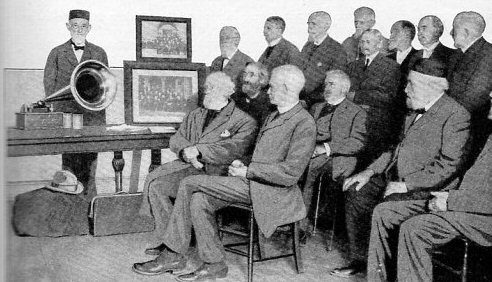Here comes the King, clopping along on his horse. His retinue, today, includes an Elk, Peacock, Shark, Butterfly, Lion, Tiger, Rabbit, Book, Coat, Boot, Hare, Rake, Barrel, Caterpillar, Pigeon, Yard Stick, Snail, Match, Turtle, Owl, Rhinoceros, Antelope, Watch, Skull, Cat, Cow, Giraffe, Priest, Mummy, Humpty Dumpty, Squirrel, 5 Fishes, 2 Indians, 12 Faces, 3 Mice, 11 Dogs, 3 Eagles, 5 Letters, 5 Ducks, 2 Camels, 3 Elephants, 7 Men, 2 Monkeys, 2 Cymbals, 4 Birds, 4 Bears, 4 Goats, 8 Frogs, 2 Seals, 3 Beavers, 9 Sheep, 3 Ladies, 5 Horses, 5 Pigs, 2 Chickens, 4 Alligators, 2 Boys, 2 Babies, 2 Combs. It is a curious retinue, but then he is a curious King. His father said as much, when the King was yet a Prince.
“The Prince,” said the old King to his wife, the Queen, languishing at death’s door as usual, “Is a very curious young man. There is for one thing the business with the buttons. There is for another thing the shape of the head. I fear he will become a curious King when his time comes.”
The Queen groaned and asked the King to summon the nurse to replace her mustard plaster.
The King, then Prince, was six when these words were spoken. Now he is sixty-six. He has been the King for over half a century. It is almost as long ago that he put the business with the buttons behind him. The shape of the head, being physiological rather than whimsy, was not so easily discarded. And yet, over the long years, the shape of the head had changed, slowly gradually glacially, as it moulded itself better to fit the crown atop it. The crown had been struck for and first worn by the King’s great-great-great-great-great-great-grandfather, though we ought not try to be too precise about the number of greats. History can be treacherous the farther back we delve.
Ahead of the King now, as he clops on his horse, are the motorcycle outriders. There is a significant number of them also at the rear of the retinue, just behind the 2 Babies and 2 Combs. The motorcycle engines purr, their purr a constant below the rhythmic clopping. The King’s tape-recordist skitters now ahead, now behind, now in the midst of the retinue, never satisfied that he has found quite the perfect spot to immortalise the sound of the King’s progress through his island. Today’s recording, however imperfect, will fill the airwaves of the radio station for the next week or more. The King’s subjects will listen, rapt, as they go about their grind.
Today’s sniper is stationed, foolishly and predictably, at the sixth-floor window of one of the replicas of the Texas Schoolbook Depository building in Dallas. These clapboard but highly accurate constructions have been placed at intervals along the King’s route, specifically to lure and entrap foolish and predictable would-be assassins. Sure enough, with minutes to spare before the King and his retinue hove into the sniper’s sights, a SWAT team takes him out with extreme prejudice. The SWAT team have been awaiting the signal from their base in a replica LZ 129 Hindenburg airship hovering high in the clouds above the replica Schoolbook Depository.
There is always the possibility that the King may be threatened by a sniper who is both intelligent and unpredictable, and there is a Plan B to deal with such a situation. I hope I am not giving too much away by revealing that the 2 Monkeys, 4 Bears, and six of the 9 Sheep in the retinue are not quite what they seem.
The King himself is not even aware of Plan B. It was thought best not to tell him. He has never really regained his wits since a sniper’s bullet felled his father, the old King, over half a century ago. Hence his relentless criss-crossing of his island kingdom, astride his clopping horse, with his curious retinue, to no apparent purpose, and with no apparent end.






